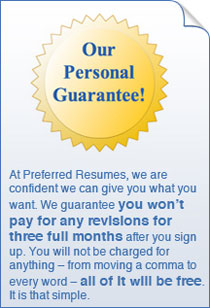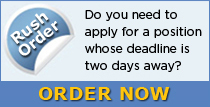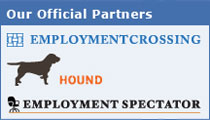Dressing for Success : Your Second Skin Will Help You Get In
By Lancelot Larsen
|
|
Typically, the problem of deciding how best to project an image of professionalism arises when you have an interview to attend. The greater the position, the greater the gains, the greater the responsibility, the more likely you will be scrutinized from top to toe. If you are not aware of this, you must acquaint yourself with this reality. Professionals spend so much time discussing and researching their trades and related interests that they do not think to take seriously the small details that could make or break their chances of changing or advancing their careers. The first three minutes of the interview is irreversible, and it's crucial that you are well-prepared before you arrive and that you look the part and meet or exceed their expectations. Your second skin needs to project the perfect level of professionalism; otherwise it will distract the aim of your mission. You may not like the "uniform" feel over your skin, but it is necessary to communicate maturity and commitment to teamwork.
It's important to mind your appearance for the interview so that the interviewer will concentrate more on your qualifications than trying to figure out what you are wearing. Emory University estimates that 80% of hiring decisions are based on first impressions. You might think this is crazy, but think again. The fact is that most people who will contend with you for the same job will have the same qualifications as you and give the same answers at the interview. Every little detail is important to tip the scale in your favor. True, you could do that with your clever interview answers, but why not expand the scope of impression you intend to showcase?
Before you go to your interview:
The first thing is to give yourself plenty of time to go over the details of what you are wearing and be mindful that you may need cushion time for unexpected events or emergencies like traffic, a kid leaving ice cream on the floor for you to fall on, or helping a lady who can't speak English parallel park her luxury car during rush hour.
Be persnickety when looking over your outfit beforehand. The most obvious, of course is to ensure that everything you intend to wear is clean, neat, and ironed. Look at the fabric in the light for wrinkles and stains and place your nose over the folded areas just in case. If you just bought your suit, make sure all tags and any outward labels are removed. Look for missing buttons, seems that might have come undone over time, threadbare cuffs, sagging lining, and other areas that could use professional or personal tailoring. Make sure your pockets are not so overstuffed that they bulge. Deodorants are a must, but applied within reason. Colognes, aftershaves, and perfumes are best not to use. If you insist, make sure it is applied sparingly. The interviewer might be allergic to these products, plus too much perfume or cologne is guaranteed interview disaster. Shoes should be comfortable so that you appear comfortable at the interview. Keep them polished and looking like they are taken care of because it will demonstrate good attention to detail on your part. Only wear real jewelry, but nothing distracting. Do not wear cufflinks as they might appear pompous. Only wear leather, silver, or gold watchbands. If you wear tiepins, do not choose one with a noticeable design.
Always keep you briefcase or purse organized, polished, and clean so as not to distract the interviewer while you rummage for a document inside something that looks like it has just been returned from Iraq. If the weather requires a winter coat, keep it cleaned and pressed and take some time to make sure it's not too weather-beaten after your commute to the interview. If you require an umbrella, it should look conservative-black, navy, gray, or tan-and don't let it drip on the office carpeting. Always bring pens that write and don't leak and keep them in your jacket pocket for easy access. Bring extra paper as well.
Wardrobe tips for men:
Americans love blue. It is the color that conveys confidence and serenity. Navy blue communicates trust. A tailored navy blue suit is ideal. Otherwise, try charcoal gray or beige, but avoid black, as some may view it as too commandeering, powerful, macabre, or sexy. Wear a light shirt if you wear a dark suit. Preferably, wear a white long-sleeved pressed and laundered shirt in case you have to remove your jacket. Light blue and stripes are accepted as well. Choose wool or a wool blend for the suit, cotton for shirts, and silk ties. Always wear business-looking (oxfords or loafers) shoes in black, brown, or cordovan to match the suit, and wear over-the-calf dark socks for a conservative look that will prevent the socks from sagging. Argyle and patterned socks are okay for professional wear, but avoid them for the interview. Patent leather shoes are not accepted. Your tie should match the suit in color and can be solid, striped, or tastefully patterned. Ultimately, the shirt and tie combo will make or break your look. You want something that looks respectful and will support your message. Never wear a tie that draws attention to itself. It will cancel the suit and you will only be half-heard. Wedding and class rings are fine, but avoid earrings. Your hair should be collar-length, above the ears, and nicely combed, in short, conservative. If you have facial hair, it should be trimmed as well. Beards and ponytails, while more acceptable these days, can still be put off some interviewers. It's safer to be clean-shaven. Stay away from cologne. But if you feel you must use it, do so long beforehand.
Wardrobe tips for women:
Wear a tailored suit that doesn't look so complicated that the interviewer will instinctively want to study it. A tailored dress or dress and jacket combination with a simple blouse will suffice. Slim, flat-front trousers will work as well. Choose wools, wool blends, cotton, and silk in conservative colors like black, blue, gray, and beige rather than loud styles that will certainly distract from your purpose. A skirt should be knee-length—avoid miniskirts like the plague. Blouses should be white, cream, or other light colors. A soft floral design may be worn as an alternative. Wear low-heeled (1.5"-2" high) pumps and flesh colored stockings. The color of the shoes should be dark, but no stilettos or open toe and sling-back shoes. Do not wear a lot of jewelry and avoid distracting types such as those that jingle. Wedding and class rings and watches are acceptable. Comb your hair neatly and keep it out of your face so that you will not project the image of having something to hide. Avoid heavy doses of hairspray and makeup, and it would be ideal to avoid it altogether. If you feel naked without makeup, just keep in mind to apply it for a natural look. Likewise, if you feel naked without perfume, spray it on your person two or three hours before the interview, which should secure subtlety.
Also, don't forget to give a warm smile, keep good eye contact, and provide a firm, dry handshake. Give yourself fifteen minutes early arrival to use the restroom and prim yourself and remedy any disruptions caused from your commute to the office.
It's a good idea to research the company and get a feel for their culture. Wear what they wear. If it's a casual environment, be conservative and upright for the interview, and then follow the "when in Rome" standard. Just remember to give yourself some time to select an outfit and have it dry-cleaned or tailored if necessary. If you succeed in getting the job you seek, remember to display you creative side when choosing wardrobes for work, but keep it somewhat similar to what you see around you in the office. Remember that you represent the image of the company. Ask questions about the dress code on the first day if you are unsure about what you are seeing on others around you. The advertising department will tend to dress differently than the financial department. When you get the feel for what to wear, purchase an assortment of pieces and mix it up, and always buy classic designs and quality craftsmanship.
Location is something to consider as well. If you are used to the New York conservative office look, you may want to try business casual if you are transferring to the Silicon Valley. So, goes for experience. If you are an entry-level candidate, you want to be perceived as mature and diligent, but a mid-level candidate might want to convey adaptability to new office environments. Feel free to break the rules. But be careful. A miss will have result in a worse situation than a hit at its best effect.
The most common advice for job seekers is to observe the office unannounced beforehand. For example, disguise yourself as a messenger and have a look around.
On the Net
Dress for Success
www.worktree.com/tb/IN_dress.cfm
Dressing for Success in the Workplace
www.stfrancis.edu/ba/ghkickul/stuwebs/btopics/works/dress.htm
Dressing for Success in Interviews
www.wetfeet.com/Content/Articles/d/dressing%20for%20success%20in%20interviews.aspx




